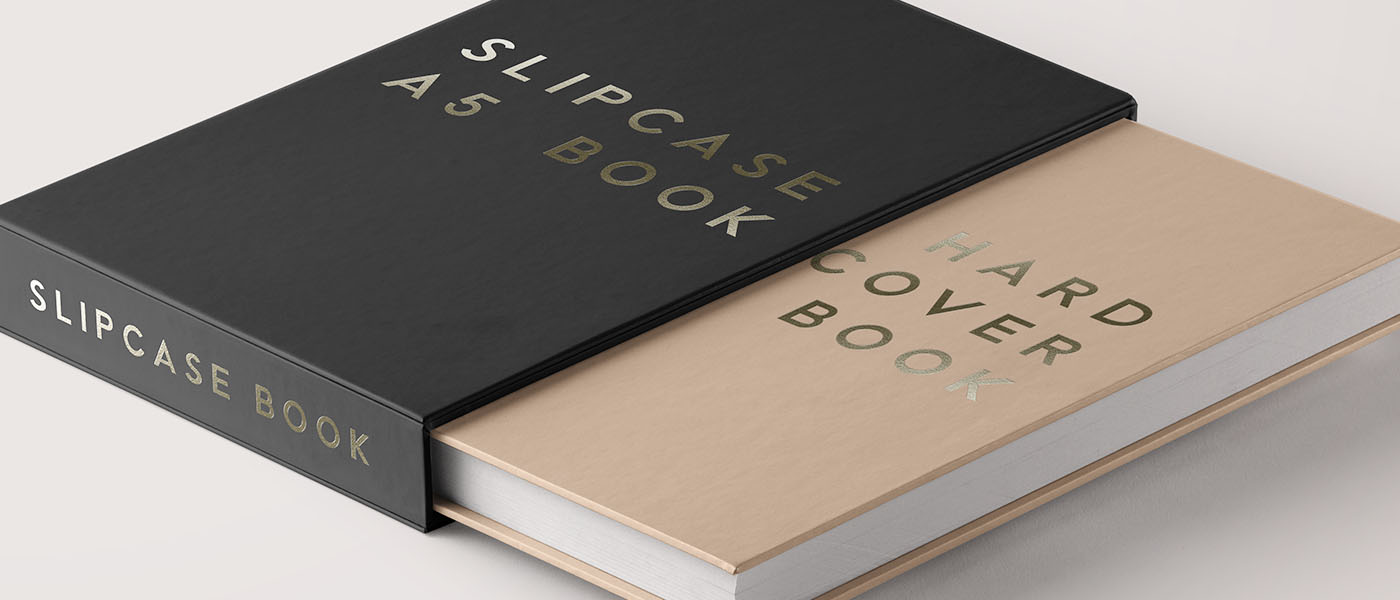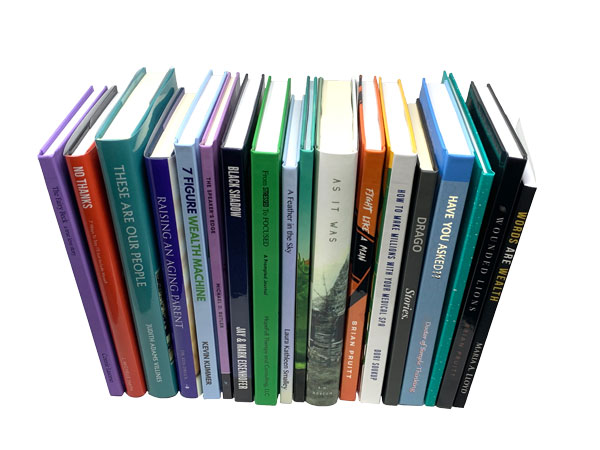Hardcover Books That Will Enhance Your Home Library
Hardcover Books That Will Enhance Your Home Library
Blog Article
A Comprehensive Guide to the Process of Hardcover Books Printing
When you begin the journey of hardcover book printing, recognizing the entire procedure is necessary. As you navigate with binding and top quality control, you'll find that every decision affects the book's total allure.
Recognizing the Hardbound Book Framework
When you explore the world of hardbound books, you'll promptly observe that their framework is deliberate and unique. You'll find a textile or natural leather treatment, which not just improves looks but likewise includes to the book's longevity.
The text block itself includes multiple signatures, or folded up sheets, stitched with each other for strength. You'll see that the spine is strengthened, allowing for a smooth lay-flat analysis experience - hardcover books. Additionally, the book's weight commonly communicates a sense of top quality and durability
Hardcover books usually include a dirt jacket, which acts as an advertising device while safeguarding the cover. Understanding these elements aids you appreciate the craftsmanship behind hardbound publications and their distinct appeal in the literary globe.
Manuscript Prep Work and Editing
Getting your manuscript prepared for printing is essential, and it begins with appropriate format standards. You'll need to comprehend the editing process to refine your job and guarantee it reverberates with visitors. And also, mastering proofreading methods can assist you capture those pesky mistakes prior to your book mosts likely to publish.

Manuscript Formatting Standards
Correct manuscript format is vital for creating a professional-looking hardcover book. Make sure to check your manuscript for uniformity in design, guaranteeing that everything from spelling to spacing sticks to your chosen standards. Following these steps will establish a strong structure for your publication.
Modifying Refine Essentials
Modifying your manuscript is a necessary action that can transform it from a rough draft into a sleek end product. Begin by reviewing your work critically, concentrating on circulation, structure, and quality. Try to find disparities in your story, personality growth, or argumentation. It's helpful to take breaks in between rounds of modifying to acquire fresh point of views. Don't think twice to reduce unnecessary web content or rephrase unpleasant sentences; this will enhance readability. Take into consideration looking for comments from relied on peers or professional editors that can give important insights. Bear in mind, editing and enhancing isn't practically taking care of mistakes; it's concerning fine-tuning your voice and guaranteeing your message reverberates with readers. Embrace the process, and you'll see your manuscript sparkle.
Checking Techniques Review
As soon as you've brightened your manuscript via editing, the next step is to assure it's correct that might distract visitors. Beginning by pausing after editing; fresh eyes capture mistakes better. Read your manuscript aloud-- this helps you hear awkward phrasing and area typos. Use electronic devices like spell checkers for initial scans, however do not rely exclusively on them. Think about printing your manuscript; reading on paper can expose mistakes that screens miss. Focus on one sort of error each time, whether it's punctuation or grammar, to prevent sensation overwhelmed. Ultimately, employ a trusted friend or specialist proofreader to supply a fresh perspective. Their comments can highlight concerns you may neglect.
Designing the Publication Cover and Interior
When you're developing your publication cover and interior, you'll desire to concentrate on vital style components that capture your target market's attention. Selecting the ideal typography styles and carefully choosing colors and images can make all the difference in sharing your publication's motif. Allow's explore how these choices can raise your work and draw in readers.
Vital Design Aspects
Creating an attractive book cover and a properly designed interior is crucial for attracting visitors and improving their experience. Beginning with the cover; it's your impression. Pick colors and photos that reflect your publication's motif and mood. Make sure your title stands apart and is clear, also in thumbnail size.
For the inside, concentrate on layout and white area. A clean, organized design assists readers browse effortlessly. Think about making use of phase headings and subheadings to lead them through the material. Visual aspects, like images or graphics, can additionally boost interaction yet ought to match the text, not bewilder it. Keep in mind, a natural layout throughout your book fosters a professional look that can considerably impact a viewers's decision to pick it up.
Selecting Typography Styles
Typography plays a necessary duty in both the publication cover and interior layout, shaping exactly how viewers perceive your content. When choosing typography styles, consider your publication's genre and target audience. A traditional serif font style might work well for literary fiction, while a modern-day sans-serif may fit a contemporary book. Warranty readability; your message ought to be simple on the eyes, especially for longer passages. Take note of font size and line spacing, as these elements impact overall circulation. Mixing fonts can add interest, however restrict it to 2 or 3 to keep coherence. Lastly, consider pecking order-- use different designs for headings and body message to lead visitors effortlessly through your job. Your typography selections will considerably influence the viewers's experience.
Shade and Images Choice
Picking the ideal colors and images is necessary for catching readers' attention and conveying your book's motifs. Begin by considering your style; vivid shades may benefit a kids's book, while low-key tones match an enigma novel. hardcover books. Use imagery that resonates with your content-- images, images, or abstract layouts can improve your message
When designing the cover, make certain the images does not overwhelm the title and writer's name; quality is key. This cohesive method not only boosts your publication's aesthetic but additionally enriches the visitor's experience, making it more unforgettable.
Selecting the Right Paper and Products
When picking paper and products for your hardbound publication, it's necessary to ponder exactly how they'll affect the general appearance and feeling of your project. Start by selecting the ideal paper weight; heavier stock often communicates high quality and toughness, while lighter paper can develop a much more delicate touch. Consider the finish as well; glossy paper improves images and shades, while matte can provide a sophisticated, understated look.
Don't ignore the cover products. Towel, natural leather, or published paper can establish the tone for your publication. Decide for acid-free paper to protect against yellowing over time if your task includes images. Additionally, consider the binding products; making use of high-grade glue warranties your publication lasts.
Inevitably, the choices you make below mirror your vision, so put in the time to sample different you can try here materials (hardcover books). Your selections will help develop a book that's not just aesthetically appealing yet practical and additionally sturdy
The Printing Process: Techniques and Technologies
A variety of printing strategies and innovations can bring your hardcover book to life, each offering special advantages. Digital printing is a popular option for short runs, enabling for quick turn-around and economical solutions.
For special impacts, you could take into consideration techniques like foil stamping or embossing, which can include a glamorous touch to your cover. In addition, you can choose different inks, consisting of environment-friendly choices that provide to eco aware visitors. Comprehending these methods aids you make informed choices, guaranteeing your hardbound publication not only looks excellent but also satisfies your manufacturing needs successfully. Choose the ideal approach to elevate your book's allure and effect.
Binding Methods for Hardcover Books
A number of binding approaches can change your hardcover book right into a appealing and sturdy item. Another method is the perfect binding, which uses adhesive to hold the pages with each other, permitting for a smooth back yet less sturdiness contrasted to instance binding.
You might also think about spiral binding, which permits your publication to lay flat, making it perfect for workbooks or guidebooks. Nevertheless, it does not use the same safety cover as instance binding. Lastly, there's the saddle stitch approach, appropriate for smaller books, where sheets are folded up and stapled with each other. Each binding method has its advantages and fits various needs, so think of your book's purpose and target market when choosing the ideal choice for your task.
Quality Assurance and Last Touches
After selecting the right binding method for your hardbound book, top quality control comes to be important to validate your end product satisfies your assumptions. Beginning by evaluating the printed web pages for any errors or incongruities in shade and design. You don't desire to miss any typos or misprints that might impact your visitors' experience.
Following, check the binding integrity. Validate the web pages are safely connected which the spinal column is durable. A well-bound book not only looks expert yet likewise really feels long lasting in your hands.
Additionally, take note of the cover. Try to find any scuff marks or misalignments in the art work. Make sure they're used regularly throughout all copies. if you have actually decided for unique finishes like embossing or aluminum foil marking.
Lastly, conduct a complete examination of the entire set before relocating to circulation. By doing this, you can validate that every book mirrors your high requirements.
Often Asked Inquiries
Exactly how Long Does the Hardcover Book Printing Refine Usually Take?

What Is the Minimum Order Quantity for Hardbound Books?
The minimum order amount for hardbound publications normally begin around 100 copies, however it can differ based on the printer. You ought to consult your selected printing service for their specific demands and rates.

Can I Print Hardbound Books in Personalized Sizes?
Yes, you can print hardcover publications in custom sizes. Numerous printing services supply adaptability with measurements, allowing you to select a style that fits your job. Just pop over to these guys confirm the specifications prior to positioning your order.
Exist Eco-Friendly Options for Hardbound Book Printing?
Yes, you can discover green alternatives for hardbound book printing. Many firms use lasting inks and recycled materials. Just ask your printer about their environment-friendly techniques to guarantee your job aligns with your environmental values.
What Are the Prices Connected With Hardcover Book Printing?
When taking into consideration hardbound publication printing costs, you'll need to consider materials, layout, and printing methods. Extra expenses like delivery and binding can likewise influence your general budget, so plan as necessary for your task.
When you begin the trip of hardbound book printing, comprehending the whole procedure is essential.A selection of printing strategies and technologies can bring your hardbound publication to life, each offering one-of-a-kind advantages. Exactly how Lengthy Does the Hardcover Book check this site out Printing Process Commonly Take?
The hardcover publication printing procedure usually takes around 2 to 6 weeks.Yes, you can locate environment-friendly alternatives for hardcover book printing.
Report this page